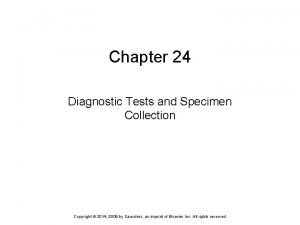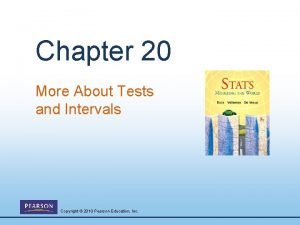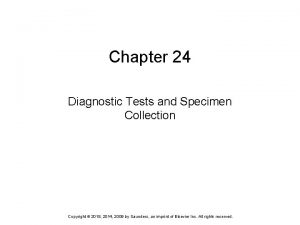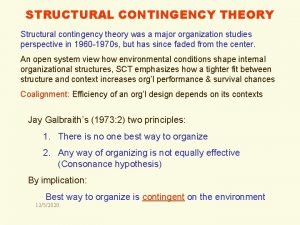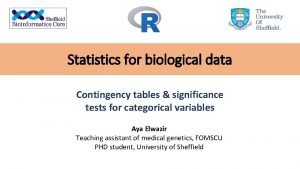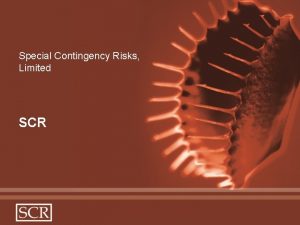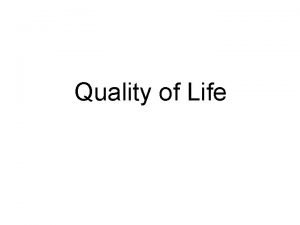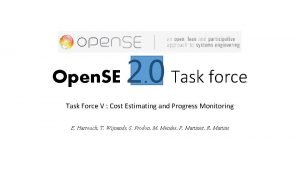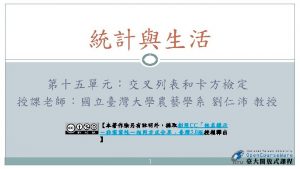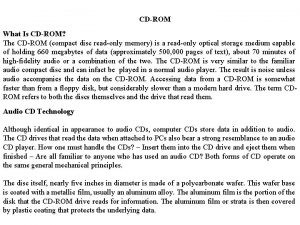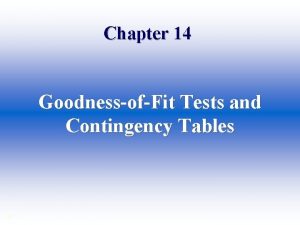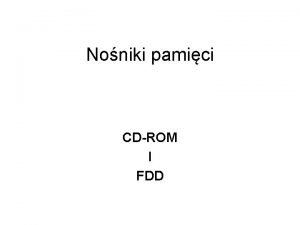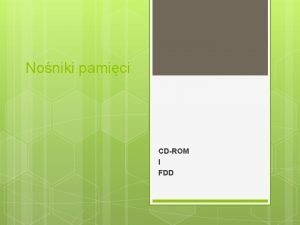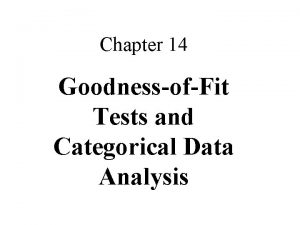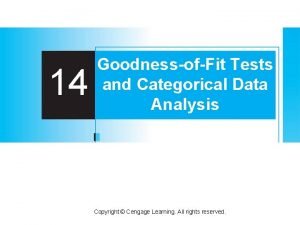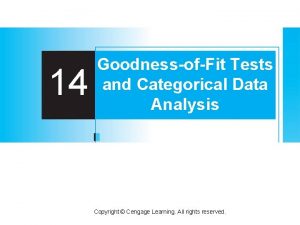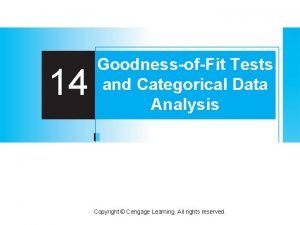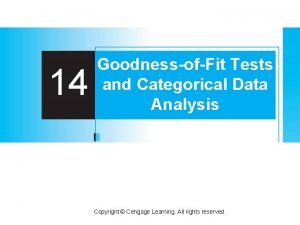CDROM Chapter 14 GoodnessofFit Tests and Contingency Analysis














- Slides: 14

CD-ROM Chapter 14 Goodness-of-Fit Tests and Contingency Analysis

Chapter 14 - Chapter Outcomes After studying the material in this chapter, you should be able to: • Utilize the chi-square goodness-of-fit test to determine whether data from a process fit a specified distribution. • Set up a contingency analysis table and perform a chi-square test of independence.

Chi-Square Goodness-of-Fit Test CHI-SQUARE GOODNESS OF FIT TEST STATISTIC where: k = Number of categories oi = Observed cell frequency for category i ei = Expected cell frequency for category i

Chi-Square Goodness-of-Fit Test (Vista Health Guard Example) H 0: Patient demand is evenly spread throughout the weekdays and 25% lower on weekends. HA: Patient demand follows some other distribution. = 0. 05

Chi-Square Goodness-of-Fit Test (Figure 14 -3)

Chi-Square Goodness-of-Fit Test (Figure 14 -3) f( 2) d. f. = k - 1 = 7 - 1 = 6 Rejection Region = 0. 05 Decision Rule: If 2 > 12. 592, reject H 0 Otherwise, do not reject H 0 2 = 12. 592 2

Chi-Square Goodness-of-Fit Test (Figure 14 -3) Since 3, 302. 7 > 12. 592, reject H 0

Contingency Analysis A contingency table is a table used to classify sample observations according to two or more identifiable characteristics. Also called a crosstabulation table.

Contingency Analysis CHI-SQUARE CONTINGENCY TEST STATISTIC where: oij = Observed frequency in cell (i, j) eij = Expected frequency in cell (i, j) r = Number of rows c = Number of columns

Contingency Analysis (From Figure 14 -9) H 0: Gender of yearbook editor is independent of college’s funding source. HA: Gender of yearbook editor is not independent of college’s funding source. = 0. 05 Private Public Male Actual = 14 Expected = 39. 98 Actual = 43 Expected = 17. 02 Female Actual = 141 Expected = 115. 02 Actual = 23 Expected = 48. 98

Contingency Analysis (From Figure 14 -9) f( 2) d. f. = (r - 1)(c - 1) = (1)(1) = 1 Rejection Region = 0. 05 2 = 3. 841 Decision Rule: If 2 > 3. 841, reject H 0 Otherwise, do not reject H 0 2

Contingency Analysis (From Figure 14 -9) Test Statistic: Since 76. 188 > 3. 841, reject H 0

Contingency Analysis EXPECTED CELL FREQUENCIES

Key Terms • Chi-Square Goodness-of-Fit test • Contingency Table
 Cdrom device arbiter service
Cdrom device arbiter service Notifychangedirectory
Notifychangedirectory Ace different tests help iq but
Ace different tests help iq but Chapter 23 specimen collection and diagnostic testing
Chapter 23 specimen collection and diagnostic testing Chapter 20 more about tests and intervals
Chapter 20 more about tests and intervals Chapter 23 specimen collection and diagnostic testing
Chapter 23 specimen collection and diagnostic testing Univariate analysis tests
Univariate analysis tests Theoretical foundation of leadership
Theoretical foundation of leadership Structural contingency theory
Structural contingency theory Two by two table
Two by two table Scr limited
Scr limited Special contingency risks
Special contingency risks Contingency plan template
Contingency plan template Contingency awareness
Contingency awareness Contingency reserve vs management reserve
Contingency reserve vs management reserve



